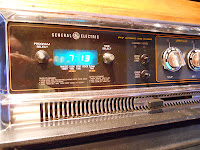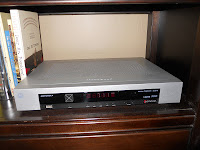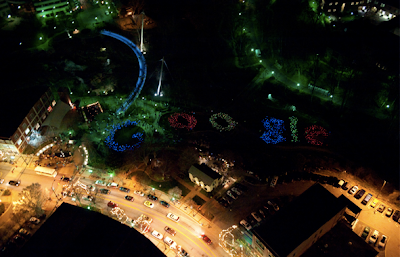Reading Time: 10 minutes
 |
| Coffee-Maker |
2008 Daylight Saving Time (DST), aka daylight time, will come to an end on Sunday, November 2nd at 2:00AM**. So if you happen to be awake at 2:00AM on Sunday morning and you don’t live in most of Arizona and Hawaii please remember to “fall back”. Most people will go around their home before they go to bed on Saturday evening and reset all of their clocks. They will check the kitchen stove, microwave, coffeemakers, wall clocks, grandfather clocks, alarm clocks, their wrist watches, etc. Depending on the age of your automobiles or the sophistication of your car you may need to reset your vehicle clocks, as well. Your computers will update automatically and the good news is if you have cable TV your local cable company will automatically update your cable boxes. “Springing forward” and “falling backward” can be exhausting.
 |
| 40 year old oven clock |
If you take the time to read the history of daylight saving time you will find that the pros and cons continue to baffle countries, states, counties, etc. When these governments debate the benefits, typically research shows that most of these benefits are never realized. But that is not my problem this year. You see this year I moved to Arizona, one of two of the United States that chooses not to observe “daylight saving time”. Arizona is actually located in the Mountain Time Zone which means that when it is 10:00AM in California (PST), then it is 11:00AM in Arizona, except during “daylight saving time” when Arizona does not “spring forward”, which means from the second Sunday in March until the first Sunday in November it is the same time in Arizona as it is in California! Now just to confuse the issue a little more, part of Arizona includes the Navajo Nation and the geographical boundaries of the Navajo Nation include parts of Arizona, Utah and New Mexico; therefore, the Navajo Nation does observe “daylight saving time.”
 |
| Cable Box |
Time zones can be quite entertaining. We tend to zero in on our own time zone and sometimes have trouble with the simple computation of adding or subtracting hours to determine what time it is in another time zone. Let me give you an example. When I was an innkeeper in New Hampshire (EST) it was not unusual to get a phone call at midnight with someone requesting to make a reservation. Invariably when I would inquire where they were calling from they would say something like California (PST). If I had been awakened from a deep sleep, I would further inquire “Do you know what time it is in New Hampshire?” And more times than not, the response would be: “Oh, isn’t it 6:00PM? Isn’t New Hampshire three hours behind us?” No….New Hampshire is three hours ahead of California!
I, too, have been time zone challenged over the years. When I first moved to Alaska in the winter of 1983 there were four time zones Alaska. Yes, you read correctly, four time zones in one state. This became a problem when Dennis would travel throughout the state and he would call home to check in, many times forgetting that he was two time zones away from me and I had already gone to bed! Fortunately, in September 1983, Alaska went to two time zones. Some at the time referred to this new larger time zone as “political time.” The New York Times reported on September 18, 1983: “Transportation Secretary Elizabeth H. Dole ordered changes Friday that will put most of Alaska in the same time zone and end years of confusion and communication problems in the state. Under the action, taken under the Uniform Time Act of 1966, all but the extreme western portion of the Aleutian Islands will be consolidated in the Yukon Time Zone. The change takes effect on Sunday, Oct. 30, when the country goes off daylight time. Alaska, the largest state in area, stretches across four time zones. That has created problems in doing business within the state, with the rest of the United States and with foreign countries. The changes were made at the request of the Alaskan authorities, who had complained of the difficulties of dealing with four time zones, after public hearings in the state.”
 |
| Wall clocks need to be changed |
The good news for me is that tonight I don’t have to go around the house and change all of the time pieces, but I do have to remind myself for the next four months that I do live in the Mountain Standard Time zone and not to call my California Webconsuls’ associates too early in the morning. Remember Mountain Standard Time is one hour ahead of Pacific Standard Time. This means when it is 6:00AM in Arizona, then it is 5:00AM in California!
This morning it just occurred to me that Fire safety officials encourage people to use the two annual clock shifts as a reminder to check the batteries in smoke and carbon monoxide detectors. I wonder how Arizonians remember to check their smoke alarm batteries, since they don’t need to reset their clocks. I will let you know how this works out for us.
By the way, since it is Saturday, why not share some of your own anecdotes about Daylight Saving Time?
**Daylight Savings 2012 ends on November 4th at 2:00AM.






